George Miller
Some Thoughts About
Early Postcard Collectors
This title comes from a headline that recently caught my eye. It appeared in
The Post Card World, a postcard collectors’ magazine that began publishing in St. Louis, Missouri, in 1906.
How many cards, I wondered, were in “one” of the “largest collections in the world”? The opening sentence provided the answer: “Beginners in the postcard collecting fad will, no doubt, be greatly surprised to learn that there is a collector in Paterson, New Jersey, whose collection numbers 10,000 cards, but it is fact.” Even today, the number is impressive and this, after all, was in 1906, a point only a few years into the collecting obsession.
It is trivial facts about postcards and postcard collectors like these which obsess me. Like most longtime collectors, I’m often – no, always – irrational about postcards. It is not just the cards themselves, although that is bad enough, I’m also obsessed with the early days of collecting. What was it like to be alive and collecting during the golden age of postcards? That title, coupled with many years of researching and collecting, prompts these thoughts.

 Much of Collecting Was Exchanging
Much of Collecting Was Exchanging
The collection of cards mentioned was that of Mrs. George Baum of Paterson, New Jersey. She began collecting in 1901 and in 1906 was adding cards to her collection at the rate of one hundred each week. In her best week, she “received” 158 in one day.
The verb “received” is crucial. Mrs. Baum, like nearly all of the very early collectors, acquired her cards through the mail from other collectors. There were “postcard exchanges,” often done a card at a time. There she was living at a time when you could have visited a local postcard store and purchased hundreds of cards for a few cents each and she, like almost every collector, relied instead on exchanges with other collectors throughout the world.

Mrs. Baum’s method of collecting cards is echoed in nearly every one of the dozens of stories that I have read about early collectors. L. C. Wheeler writing in the same issue of
The Post Card World, noted: “I began collecting in the year 1902, at which time we had no such societies (postcard collecting clubs) as we have at present, where we could get such reliable names (of people willing to exchange).” “Look at the fine cards we receive from our foreign cousins, together with a good variety of postage stamps, postmarks, and autographs,” he continued. “I make a specialty now of collecting only from foreign countries and small islands and try to get six cards from each place, of which I have succeeded in getting them from 103 different places.”

 Early Collectors Were “into” Views
Early Collectors Were “into” Views
If you exchanged postcards, you often sent local views. Now to me that seems a little surprising. To my mind, local views are of local interest. Why should I want to see or acquire a view of the courthouse or a local church in a neighboring community hours or days away? But that’s exactly what many exchanges involved. Mr. Wheeler wrote, “Every city in the world and most of the smaller towns have a set of cards bearing views of the principal places of interest or the public and prominent buildings, large fires, pretty little local scenes, and more.” On postally used early views of public buildings, it is not surprising to see a message that says something like, “Here’s a view of new courthouse.”


Why? The world was smaller because travel was difficult. The majority of roads were unpaved. Getting to town was a major triumph; getting from one town to another was a rare occasion. Travel abroad, especially to exotic places, was out of the question except for the very wealthy. Newspapers and magazines carried no photographs. People were curious about the world outside of their immediate environment.
Today, we’re jaded. We fly from coast to coast, from country to country, without thinking about it; we drive for hours. We expect to see the latest disaster as it happens on television.
In the same issue of
The Post Card World was an advertisement from a publisher of postcards in Tipton, Staffordshire, England. Did he advertise Louis Wain postcards? Golliwogs? Tuck novelties? Signed art nouveau? Mechanicals? No. Half of his advertisement was devoted to the type of view that no one would want today: “Gems of English Scenery,” “Castles of England,” “English Cathedrals” (in three sets no less); and “English Lakes” (mercifully in only two sets).



 Early Collectors Saved Greeting Cards Sent to Them
Early Collectors Saved Greeting Cards Sent to Them
Early collectors didn’t just collect views. In an era before the folded greeting card so common today, people sent holiday or birthday greetings via the postcard. Early collections tend to have many greeting postcards, but often many were mailed to the collector or to members of the collector’s family. Just to judge from what I have seen; very early collectors did not tend to have albums of greeting cards which they purchased at a postcard shop with the intention of mounting them in albums.
No One Collected Postcards Advertising Products or Services
In all the years that I have collected and researched postcards, I have never found evidence that early collectors thought that advertising postcards were an appropriate part of a postcard collection. I have never seen an early collection (amassed prior to 1915) that contained advertising postcards other than a few sent to family members. Why? I guess for the same reason that most collectors today do not save the postcard advertisements that arrive in the mail. They are an intrusion – sent to us from someone we do not know, to encourage us to buy something we do not want or already have. Doubt me? Watch your own mailbox. How many postcards do you receive each week? How many do you add to your collection?
Collecting by Sets Was Uncommon
Early collectors occasionally acquired “sets” of cards, but in general they seemed more interested in examples rather than completeness. The article tells us that Mrs. Baum had in her collection, “complete series of the Paris, Pan-American, and St. Louis World Fairs, nearly every prominent building in the United States, every crowned head and ruler of the countries of the globe.” Presumably Mrs. Baum had the sets of the “official” cards for the expositions. She also, we are told, has “some beautiful specimens of the illustrators’ work.” I have never seen a reference to an early collector as “working on sets.”
It is probable that not working on sets was so for a couple of reasons. With the exception of a publisher like Raphael Tuck, most postcard publishers did not really market cards as “sets,” even though they were often published that way. While there are examples of large sets that came in boxes or envelopes, most postcards were simply put out in the stores on racks or in piles. Often cards were sold to postcard dealers in large quantities – an assortment of greetings for example. If a postcard dealer sold out of a single design in a set, it was impossible to re-order that single design.
If Early Collectors Ignored All This Stuff,
Why Does It Still Survive?
I think that the majority of postcards that survive today did not descend through the hands of early collectors or even through the fairly common family postcard album. Instead, they came from store stocks or publishers’ stocks that were liquidated years later. Consider how many postcards of every type, can be found in mint (or at least unused) condition. In some cases, it is actually more difficult to find a postally used example than it is to find an unused card. For example, you can easily buy a complete unused set of Cargill suffrage cards, they are pricey, and it may take you some time to get them all, but it is easily doable. On the other hand, try to purchase postally used copies of any of the Cargill cards. That is not so easy.
Twenty or thirty years ago it was not uncommon to find shoeboxes of mint cards. These were often highly desirable cards – I remember, for example, a shoebox of Nash Labor Day, one of Coney Island hold-to-the-lights, boxes of early Albertype sets and of Tuck and PFB greetings. When the golden age of the postcard was over, surely millions of cards still survived in the hands of stores, printers, distributors. That’s where the majority of our postcards came from.
In a way it sort of destroys a fantasy. I used to imagine what it must have been like to have collected postcards during the height of the postcard craze, when the stores were full of mint cards in pristine shape and available for a few cents each. Judging from what I can tell, I wouldn’t have paid them much attention!
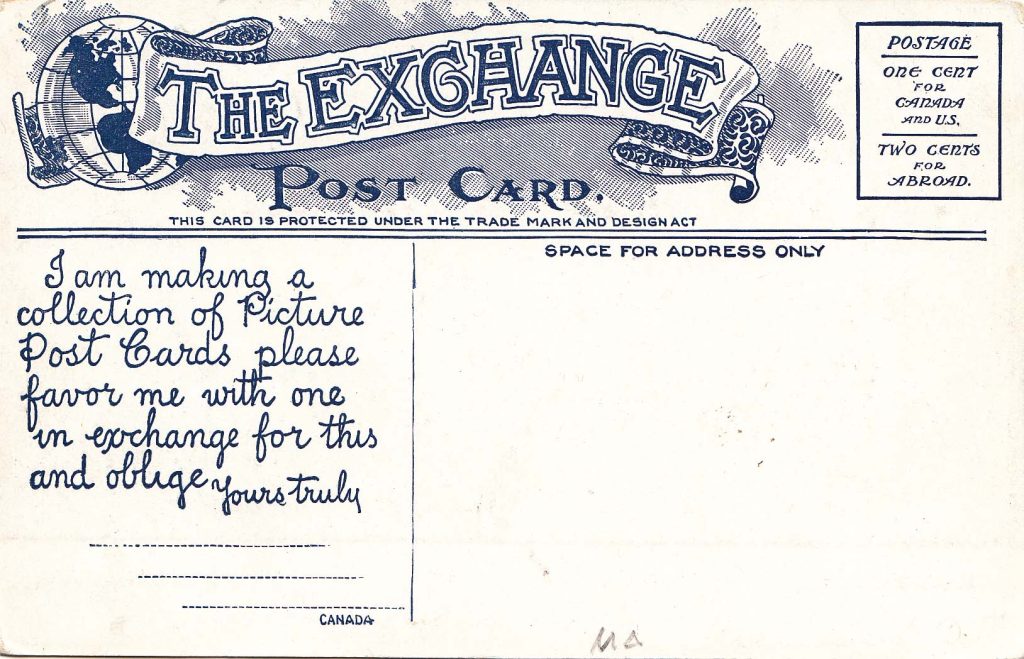
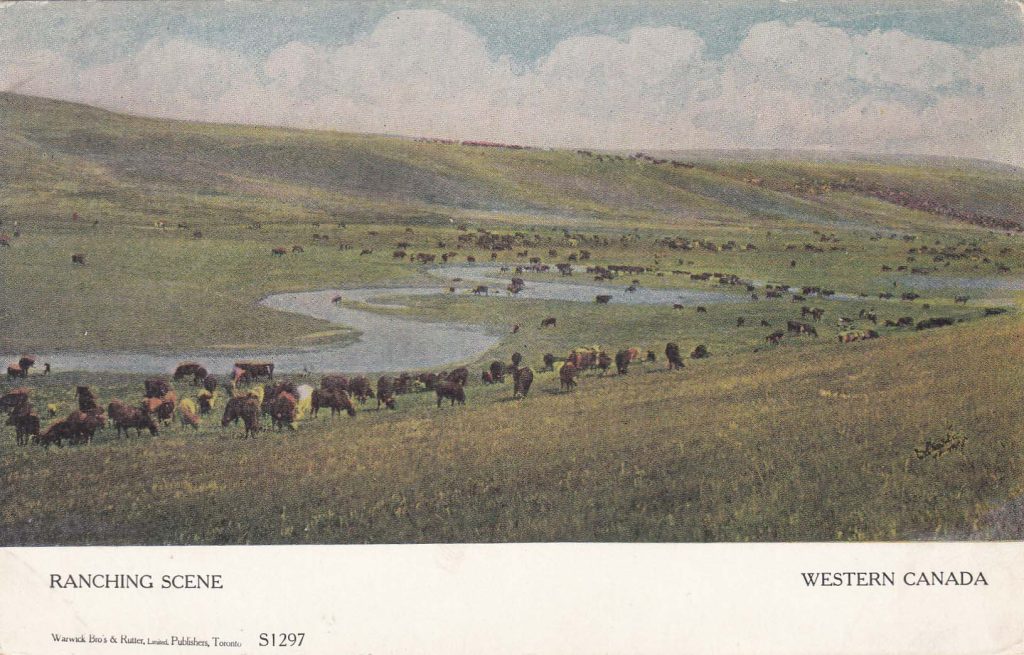 Much of Collecting Was Exchanging
The collection of cards mentioned was that of Mrs. George Baum of Paterson, New Jersey. She began collecting in 1901 and in 1906 was adding cards to her collection at the rate of one hundred each week. In her best week, she “received” 158 in one day.
The verb “received” is crucial. Mrs. Baum, like nearly all of the very early collectors, acquired her cards through the mail from other collectors. There were “postcard exchanges,” often done a card at a time. There she was living at a time when you could have visited a local postcard store and purchased hundreds of cards for a few cents each and she, like almost every collector, relied instead on exchanges with other collectors throughout the world.
Much of Collecting Was Exchanging
The collection of cards mentioned was that of Mrs. George Baum of Paterson, New Jersey. She began collecting in 1901 and in 1906 was adding cards to her collection at the rate of one hundred each week. In her best week, she “received” 158 in one day.
The verb “received” is crucial. Mrs. Baum, like nearly all of the very early collectors, acquired her cards through the mail from other collectors. There were “postcard exchanges,” often done a card at a time. There she was living at a time when you could have visited a local postcard store and purchased hundreds of cards for a few cents each and she, like almost every collector, relied instead on exchanges with other collectors throughout the world.
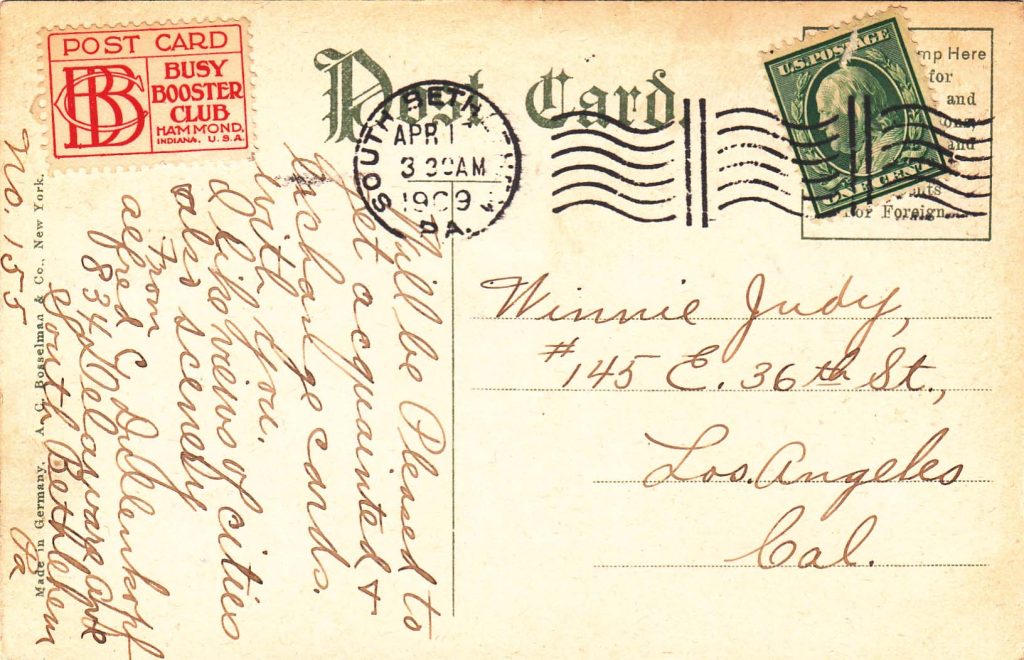 Mrs. Baum’s method of collecting cards is echoed in nearly every one of the dozens of stories that I have read about early collectors. L. C. Wheeler writing in the same issue of The Post Card World, noted: “I began collecting in the year 1902, at which time we had no such societies (postcard collecting clubs) as we have at present, where we could get such reliable names (of people willing to exchange).” “Look at the fine cards we receive from our foreign cousins, together with a good variety of postage stamps, postmarks, and autographs,” he continued. “I make a specialty now of collecting only from foreign countries and small islands and try to get six cards from each place, of which I have succeeded in getting them from 103 different places.”
Mrs. Baum’s method of collecting cards is echoed in nearly every one of the dozens of stories that I have read about early collectors. L. C. Wheeler writing in the same issue of The Post Card World, noted: “I began collecting in the year 1902, at which time we had no such societies (postcard collecting clubs) as we have at present, where we could get such reliable names (of people willing to exchange).” “Look at the fine cards we receive from our foreign cousins, together with a good variety of postage stamps, postmarks, and autographs,” he continued. “I make a specialty now of collecting only from foreign countries and small islands and try to get six cards from each place, of which I have succeeded in getting them from 103 different places.”
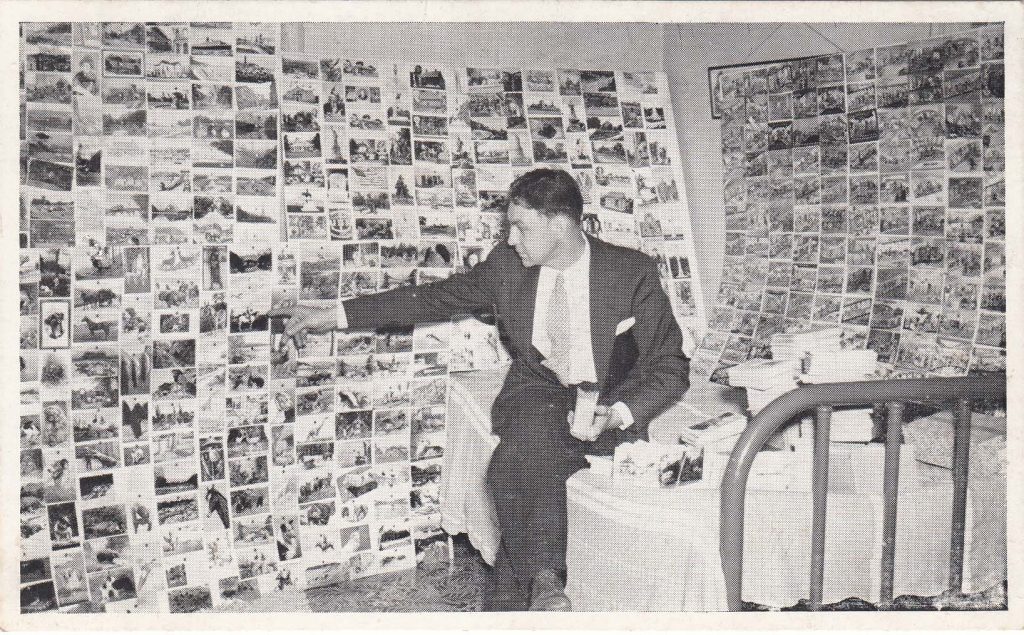
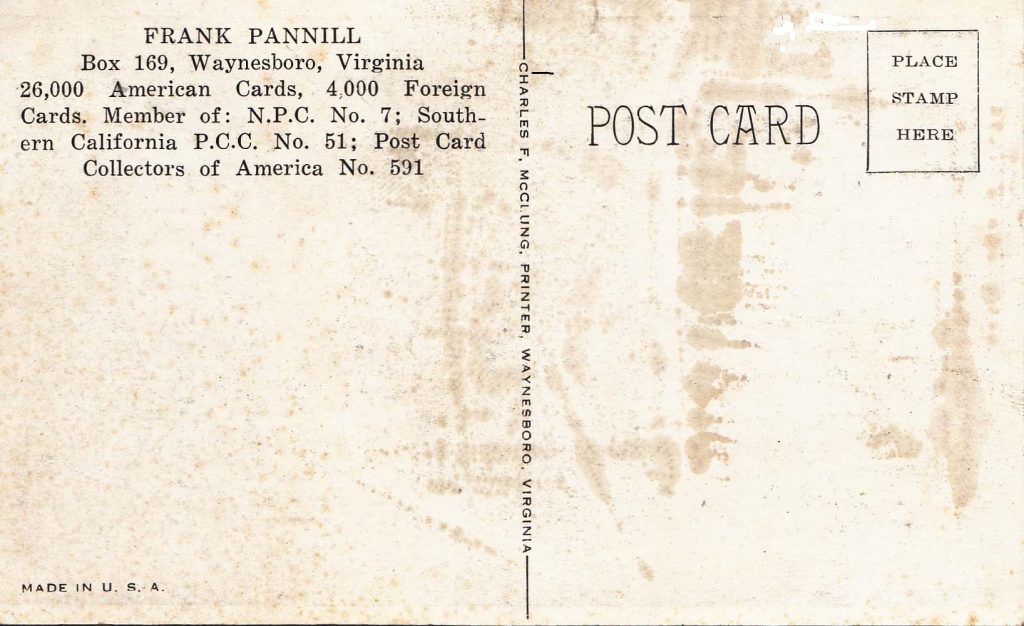 Early Collectors Were “into” Views
If you exchanged postcards, you often sent local views. Now to me that seems a little surprising. To my mind, local views are of local interest. Why should I want to see or acquire a view of the courthouse or a local church in a neighboring community hours or days away? But that’s exactly what many exchanges involved. Mr. Wheeler wrote, “Every city in the world and most of the smaller towns have a set of cards bearing views of the principal places of interest or the public and prominent buildings, large fires, pretty little local scenes, and more.” On postally used early views of public buildings, it is not surprising to see a message that says something like, “Here’s a view of new courthouse.”
Early Collectors Were “into” Views
If you exchanged postcards, you often sent local views. Now to me that seems a little surprising. To my mind, local views are of local interest. Why should I want to see or acquire a view of the courthouse or a local church in a neighboring community hours or days away? But that’s exactly what many exchanges involved. Mr. Wheeler wrote, “Every city in the world and most of the smaller towns have a set of cards bearing views of the principal places of interest or the public and prominent buildings, large fires, pretty little local scenes, and more.” On postally used early views of public buildings, it is not surprising to see a message that says something like, “Here’s a view of new courthouse.”
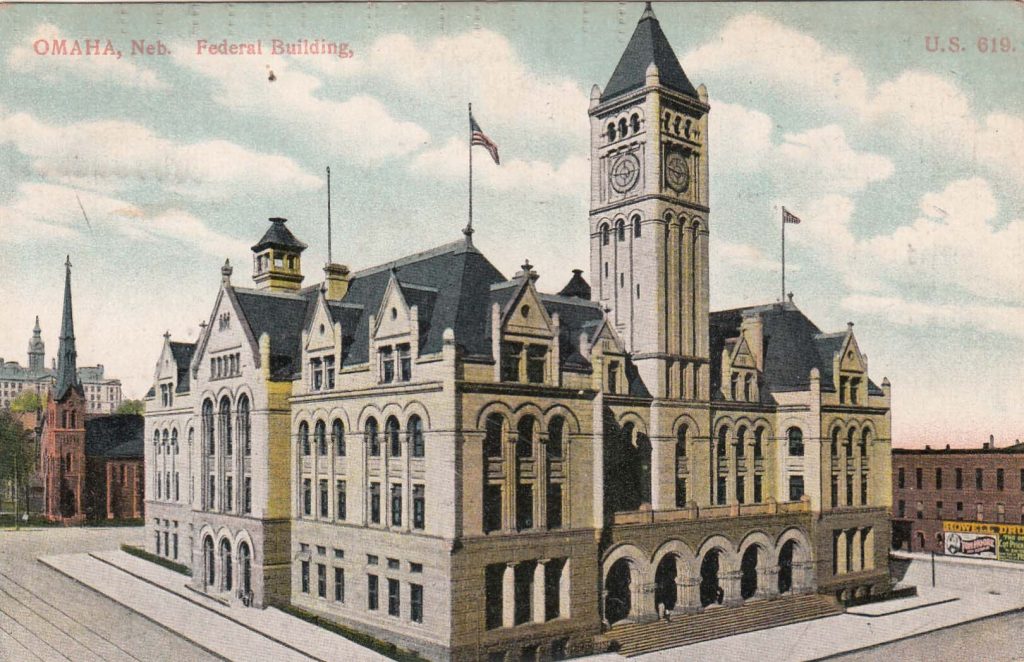
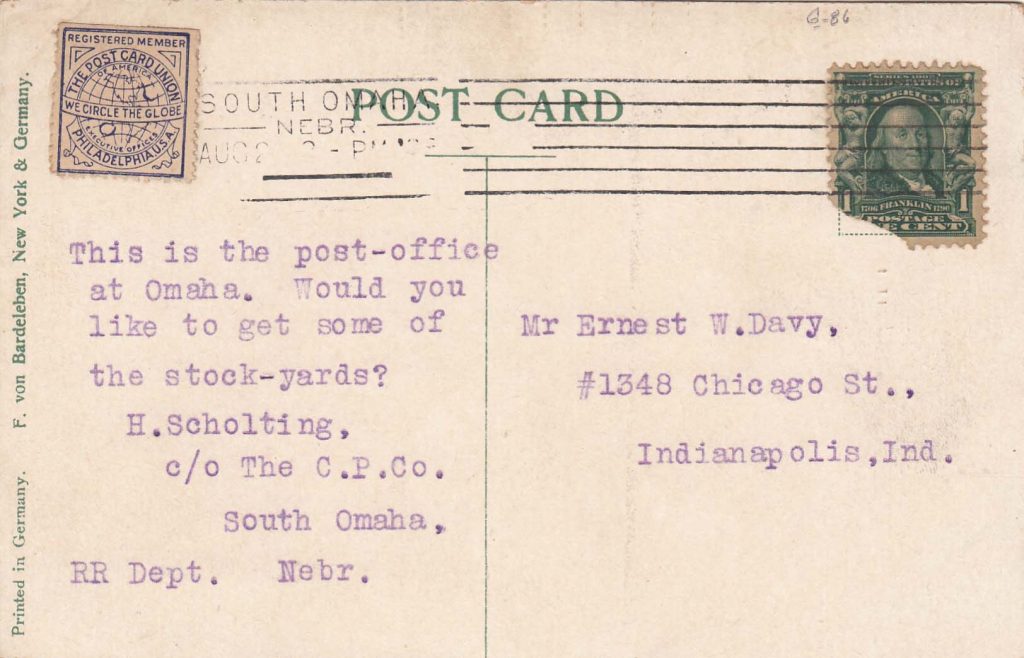 Why? The world was smaller because travel was difficult. The majority of roads were unpaved. Getting to town was a major triumph; getting from one town to another was a rare occasion. Travel abroad, especially to exotic places, was out of the question except for the very wealthy. Newspapers and magazines carried no photographs. People were curious about the world outside of their immediate environment.
Today, we’re jaded. We fly from coast to coast, from country to country, without thinking about it; we drive for hours. We expect to see the latest disaster as it happens on television.
In the same issue of The Post Card World was an advertisement from a publisher of postcards in Tipton, Staffordshire, England. Did he advertise Louis Wain postcards? Golliwogs? Tuck novelties? Signed art nouveau? Mechanicals? No. Half of his advertisement was devoted to the type of view that no one would want today: “Gems of English Scenery,” “Castles of England,” “English Cathedrals” (in three sets no less); and “English Lakes” (mercifully in only two sets).
Why? The world was smaller because travel was difficult. The majority of roads were unpaved. Getting to town was a major triumph; getting from one town to another was a rare occasion. Travel abroad, especially to exotic places, was out of the question except for the very wealthy. Newspapers and magazines carried no photographs. People were curious about the world outside of their immediate environment.
Today, we’re jaded. We fly from coast to coast, from country to country, without thinking about it; we drive for hours. We expect to see the latest disaster as it happens on television.
In the same issue of The Post Card World was an advertisement from a publisher of postcards in Tipton, Staffordshire, England. Did he advertise Louis Wain postcards? Golliwogs? Tuck novelties? Signed art nouveau? Mechanicals? No. Half of his advertisement was devoted to the type of view that no one would want today: “Gems of English Scenery,” “Castles of England,” “English Cathedrals” (in three sets no less); and “English Lakes” (mercifully in only two sets).
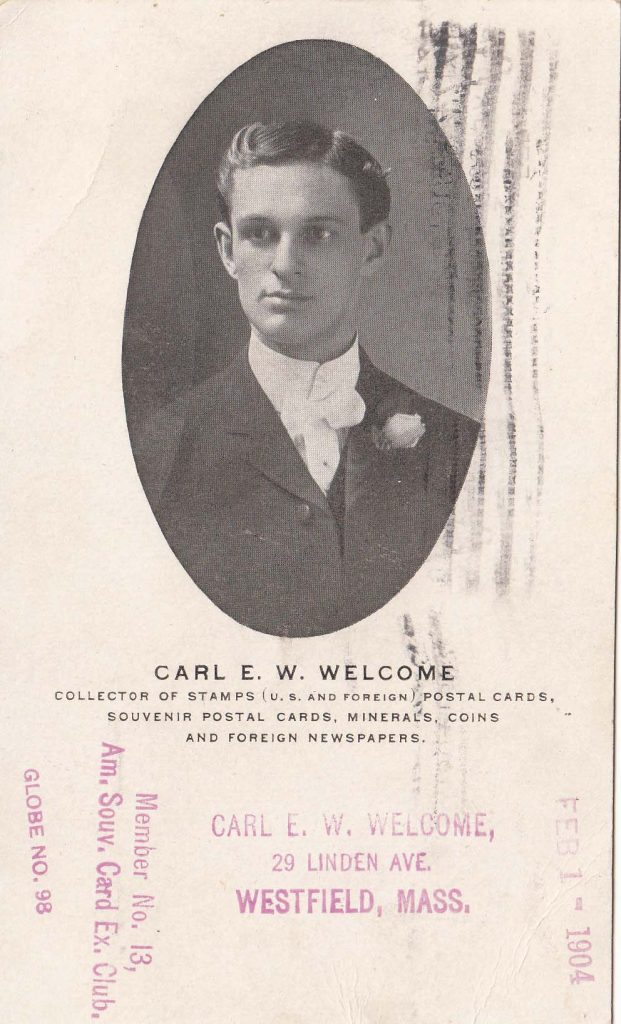
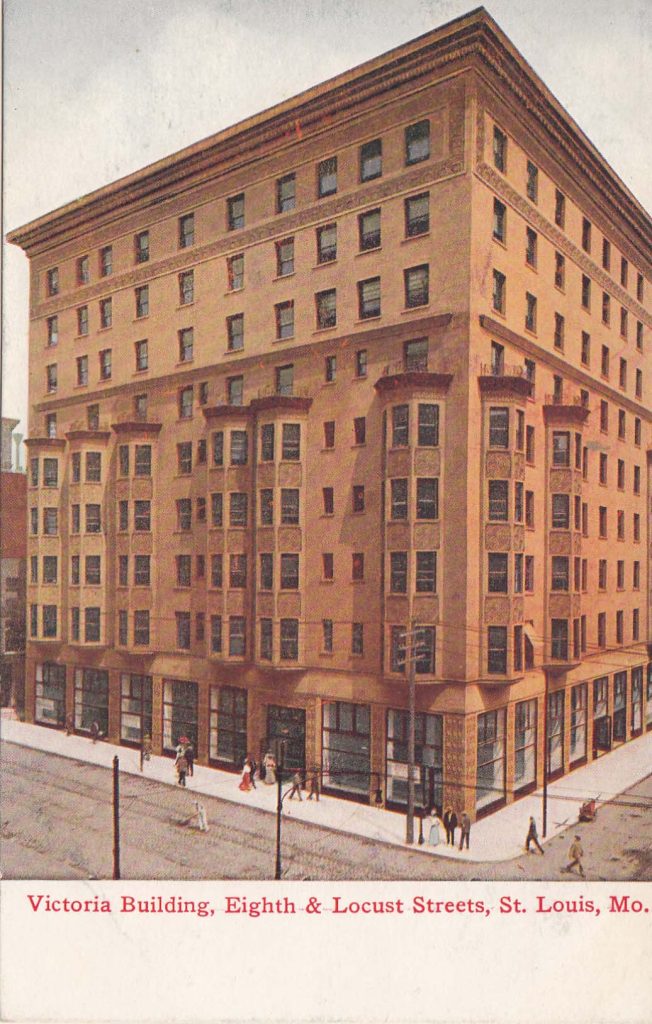
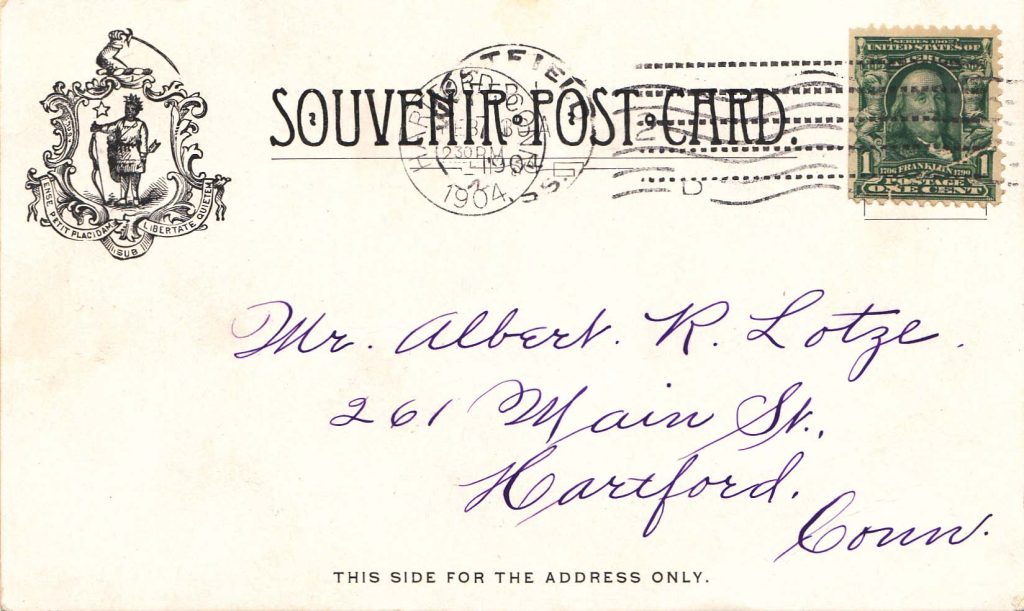
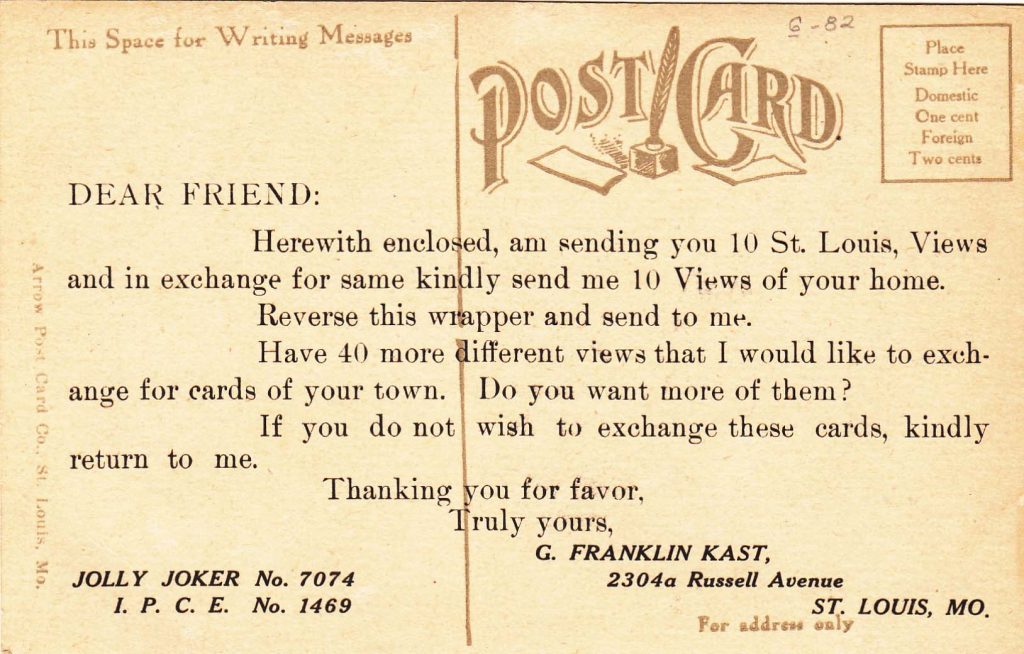 Early Collectors Saved Greeting Cards Sent to Them
Early collectors didn’t just collect views. In an era before the folded greeting card so common today, people sent holiday or birthday greetings via the postcard. Early collections tend to have many greeting postcards, but often many were mailed to the collector or to members of the collector’s family. Just to judge from what I have seen; very early collectors did not tend to have albums of greeting cards which they purchased at a postcard shop with the intention of mounting them in albums.
No One Collected Postcards Advertising Products or Services
In all the years that I have collected and researched postcards, I have never found evidence that early collectors thought that advertising postcards were an appropriate part of a postcard collection. I have never seen an early collection (amassed prior to 1915) that contained advertising postcards other than a few sent to family members. Why? I guess for the same reason that most collectors today do not save the postcard advertisements that arrive in the mail. They are an intrusion – sent to us from someone we do not know, to encourage us to buy something we do not want or already have. Doubt me? Watch your own mailbox. How many postcards do you receive each week? How many do you add to your collection?
Collecting by Sets Was Uncommon
Early collectors occasionally acquired “sets” of cards, but in general they seemed more interested in examples rather than completeness. The article tells us that Mrs. Baum had in her collection, “complete series of the Paris, Pan-American, and St. Louis World Fairs, nearly every prominent building in the United States, every crowned head and ruler of the countries of the globe.” Presumably Mrs. Baum had the sets of the “official” cards for the expositions. She also, we are told, has “some beautiful specimens of the illustrators’ work.” I have never seen a reference to an early collector as “working on sets.”
It is probable that not working on sets was so for a couple of reasons. With the exception of a publisher like Raphael Tuck, most postcard publishers did not really market cards as “sets,” even though they were often published that way. While there are examples of large sets that came in boxes or envelopes, most postcards were simply put out in the stores on racks or in piles. Often cards were sold to postcard dealers in large quantities – an assortment of greetings for example. If a postcard dealer sold out of a single design in a set, it was impossible to re-order that single design.
If Early Collectors Ignored All This Stuff, Why Does It Still Survive?
I think that the majority of postcards that survive today did not descend through the hands of early collectors or even through the fairly common family postcard album. Instead, they came from store stocks or publishers’ stocks that were liquidated years later. Consider how many postcards of every type, can be found in mint (or at least unused) condition. In some cases, it is actually more difficult to find a postally used example than it is to find an unused card. For example, you can easily buy a complete unused set of Cargill suffrage cards, they are pricey, and it may take you some time to get them all, but it is easily doable. On the other hand, try to purchase postally used copies of any of the Cargill cards. That is not so easy.
Twenty or thirty years ago it was not uncommon to find shoeboxes of mint cards. These were often highly desirable cards – I remember, for example, a shoebox of Nash Labor Day, one of Coney Island hold-to-the-lights, boxes of early Albertype sets and of Tuck and PFB greetings. When the golden age of the postcard was over, surely millions of cards still survived in the hands of stores, printers, distributors. That’s where the majority of our postcards came from.
In a way it sort of destroys a fantasy. I used to imagine what it must have been like to have collected postcards during the height of the postcard craze, when the stores were full of mint cards in pristine shape and available for a few cents each. Judging from what I can tell, I wouldn’t have paid them much attention!
Early Collectors Saved Greeting Cards Sent to Them
Early collectors didn’t just collect views. In an era before the folded greeting card so common today, people sent holiday or birthday greetings via the postcard. Early collections tend to have many greeting postcards, but often many were mailed to the collector or to members of the collector’s family. Just to judge from what I have seen; very early collectors did not tend to have albums of greeting cards which they purchased at a postcard shop with the intention of mounting them in albums.
No One Collected Postcards Advertising Products or Services
In all the years that I have collected and researched postcards, I have never found evidence that early collectors thought that advertising postcards were an appropriate part of a postcard collection. I have never seen an early collection (amassed prior to 1915) that contained advertising postcards other than a few sent to family members. Why? I guess for the same reason that most collectors today do not save the postcard advertisements that arrive in the mail. They are an intrusion – sent to us from someone we do not know, to encourage us to buy something we do not want or already have. Doubt me? Watch your own mailbox. How many postcards do you receive each week? How many do you add to your collection?
Collecting by Sets Was Uncommon
Early collectors occasionally acquired “sets” of cards, but in general they seemed more interested in examples rather than completeness. The article tells us that Mrs. Baum had in her collection, “complete series of the Paris, Pan-American, and St. Louis World Fairs, nearly every prominent building in the United States, every crowned head and ruler of the countries of the globe.” Presumably Mrs. Baum had the sets of the “official” cards for the expositions. She also, we are told, has “some beautiful specimens of the illustrators’ work.” I have never seen a reference to an early collector as “working on sets.”
It is probable that not working on sets was so for a couple of reasons. With the exception of a publisher like Raphael Tuck, most postcard publishers did not really market cards as “sets,” even though they were often published that way. While there are examples of large sets that came in boxes or envelopes, most postcards were simply put out in the stores on racks or in piles. Often cards were sold to postcard dealers in large quantities – an assortment of greetings for example. If a postcard dealer sold out of a single design in a set, it was impossible to re-order that single design.
If Early Collectors Ignored All This Stuff, Why Does It Still Survive?
I think that the majority of postcards that survive today did not descend through the hands of early collectors or even through the fairly common family postcard album. Instead, they came from store stocks or publishers’ stocks that were liquidated years later. Consider how many postcards of every type, can be found in mint (or at least unused) condition. In some cases, it is actually more difficult to find a postally used example than it is to find an unused card. For example, you can easily buy a complete unused set of Cargill suffrage cards, they are pricey, and it may take you some time to get them all, but it is easily doable. On the other hand, try to purchase postally used copies of any of the Cargill cards. That is not so easy.
Twenty or thirty years ago it was not uncommon to find shoeboxes of mint cards. These were often highly desirable cards – I remember, for example, a shoebox of Nash Labor Day, one of Coney Island hold-to-the-lights, boxes of early Albertype sets and of Tuck and PFB greetings. When the golden age of the postcard was over, surely millions of cards still survived in the hands of stores, printers, distributors. That’s where the majority of our postcards came from.
In a way it sort of destroys a fantasy. I used to imagine what it must have been like to have collected postcards during the height of the postcard craze, when the stores were full of mint cards in pristine shape and available for a few cents each. Judging from what I can tell, I wouldn’t have paid them much attention!
It would be interesting to discover a collection that had been amassed over a hundred years ago, only to sit forgotten in an attic or basement all that time!
I was lucky to find my grandfather collection of postcards. (that it is why I am a collector today). He collected postcards from a trip he did in Paris, France dating each postcard. I can follow his trip in 1904. But he also collected postcards on Napoleon and other events of the day as well as all the postcards that he received from friends and family.
I think people in those days were so hungry for communication that the messages from the sender were almost-or, sometimes more-important than the images on the fronts of the cards to them. Postcards were the texts and phone calls of the day. The images were just a bonus.
email of the day – so similar to the Henry Flagler story – his railroad carried ‘information’ both ways – quite the ‘analog algorithm’
Thank heaven collecting postcards became a fad, because so many are available today. One reason so many are in unused condition was not mentioned…it was much less costly to mail 5 or so postcards to a fellow collector in one envelope.
I have preserved several original albums that I have managed to find, for precisely these reasons: they show the types of cards that people in the “Golden Age” were really collecting (or accumulating, if they weren’t specifically “collectors”). This does not match the profile of the cards that we see at sales today: over the years, cards of types that “no one wants” have gradually been sifted out of circulation as collections are amassed and then dismantled and returned to the sale market.
And early on the mail was usually delivered twice a day! And very useful for sending request and arrangements to meet
I was at a postcard show and was surprised to find postcards addressed to my home. A girl who lived in my house over 100 years ago, collected postcards. Some postcards that she received and a few that she mailed are in my collection now.
I disagree that local views are of only local interest. Even though we travel so much more today, we still can’t get to every small town on earth. I love seeing the views of places I may never get to visit or buildings that no longer exist.
Absolutely, I love seeing the local places back home on a postcard. Buildings that may no longer exist now or in a few years. The parks and museums from before my time. It’s wonderful to see how people dressed and behaved in places where you actually stood too. They will be ever more important during the next 100 years of growth.
Those who seek examples of a certain photographer will often cross state lines to capture the depth of their works. Regionalism is not a concern.
Since it was mentioned as almost non-existent, I came across a very old 1887 [I think] advertising postcard series. A gilded in gold leaf around a cobalt blue background. Romantic girl of the time, clean and pretty from the soap she used. I have to find it to research. It had personal notes in the text and went to different locations. But they are in very poor condition, so fragile, dogeared, and I’m afraid to handle them. They were so beautiful. I don’t think I could even bear to part with them ever.
What I love about the postcards is the history of the past where they communicate in small greetings sending messages from afar.A gesture of thought to a friend and loveones. Details of each moments,describing weather and life. Postcards caught my eyes at carboot sale a big box consist thousands of old postcards some dated early 18th century all over the places in England and Europe. Postcards which was painted in oil and watercolour with personal signatures in those days was common i supposed it signify personality of each person. Beautiful scenery some are even sketch in pencil. Fascinating arts,artistic defined… Read more »